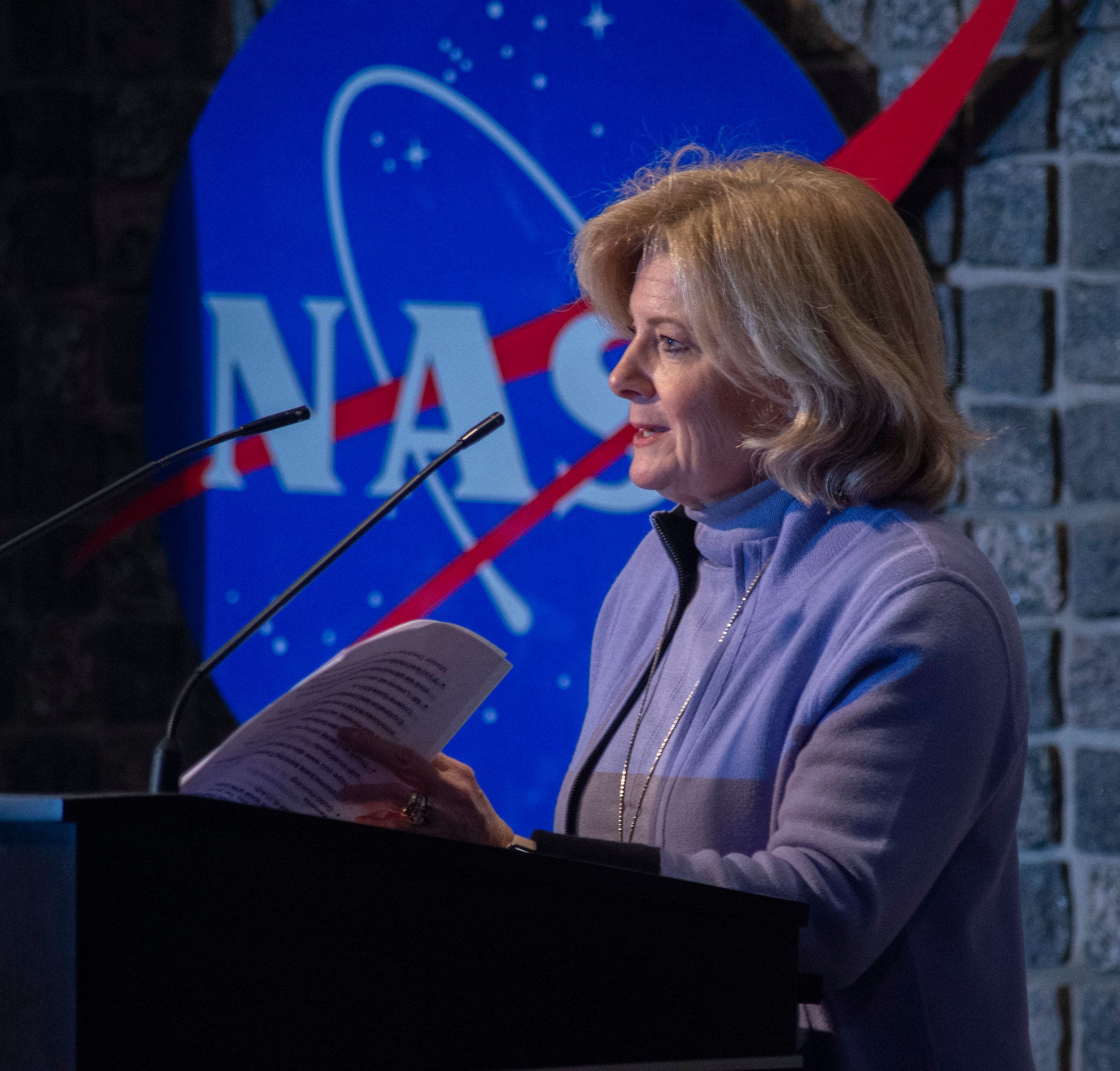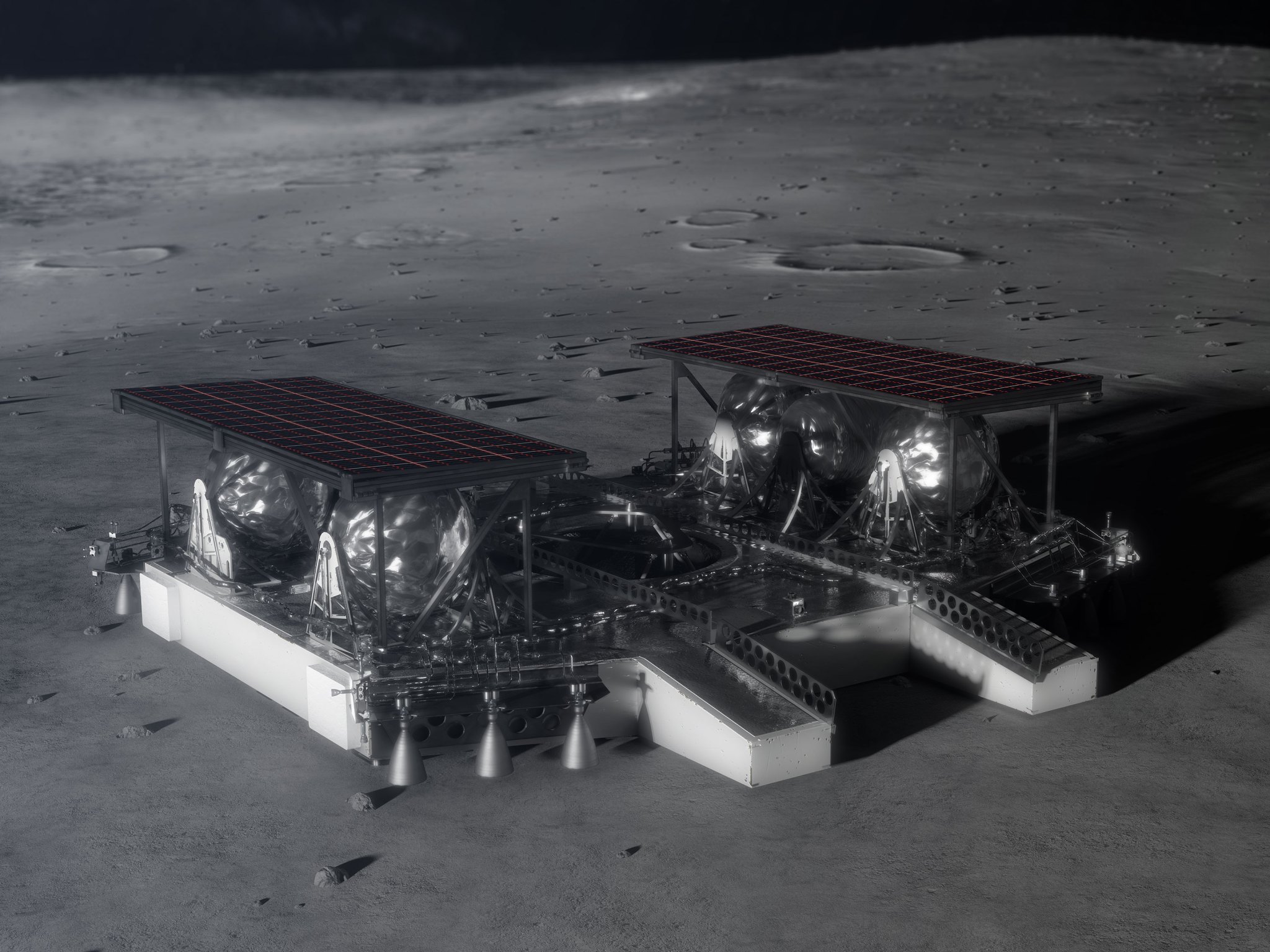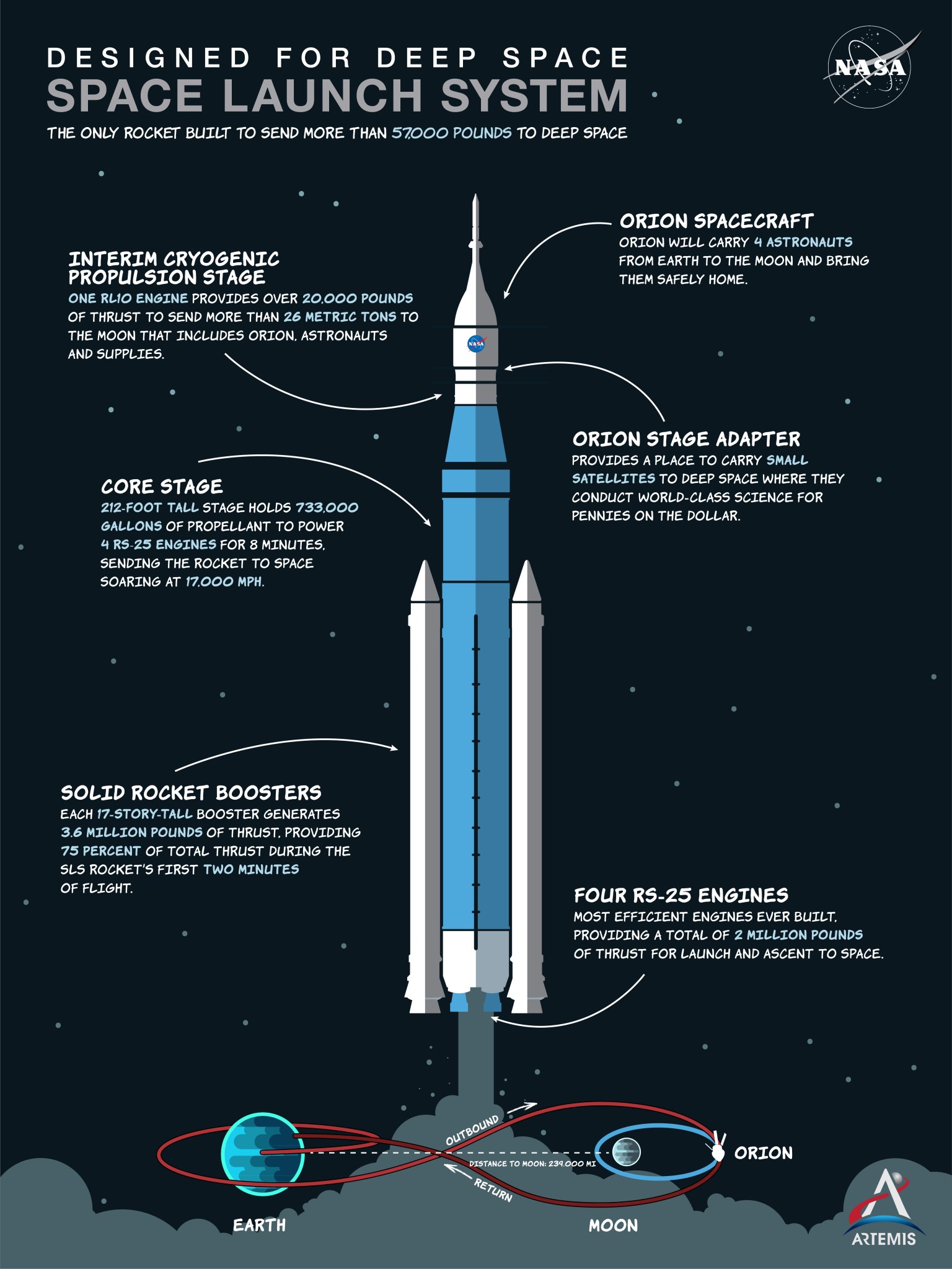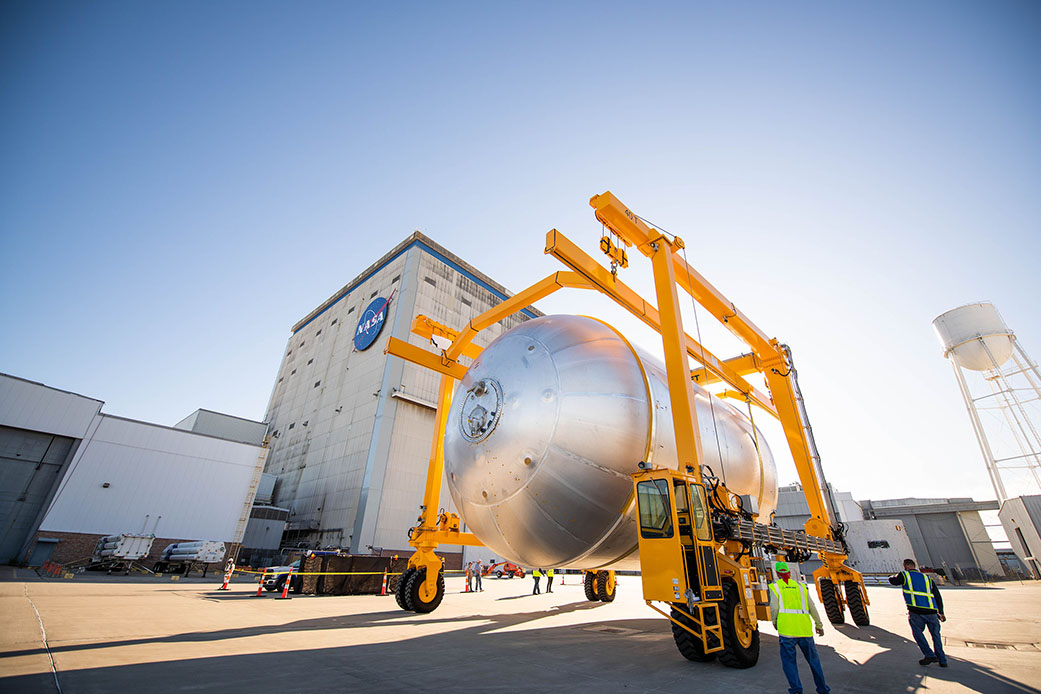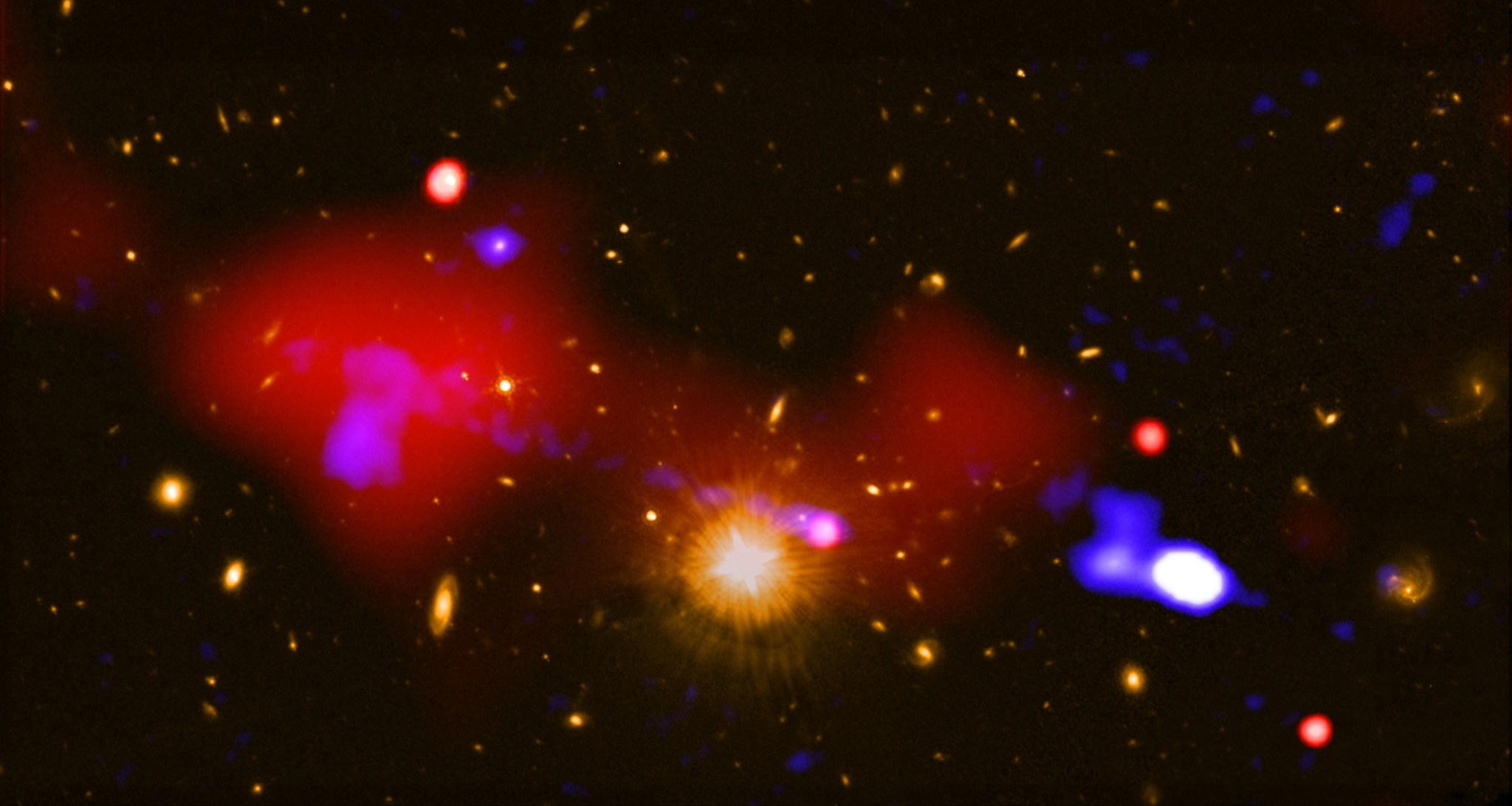In This Week’s Star
- Douglas Loverro, New NASA Associate Administrator For HEO, Determined to Make Moon 2024 a Reality
- NASA Shares Midsized Robotic Lunar Lander Concept With Industry
- As Artemis Day Nears, NASA Spotlights SLS Core Stage Progress
- Artemis II Propellant Tanks Prepped for Next Phase of Manufacturing
- Black Hole Nurtures Baby Stars a Million Light-Years Away
- Marshall Holiday Tree Lighting Celebration Set for Dec. 9
- NASA’s Fermi, Swift Missions Enable a New Era in Gamma-ray Science
- This Week in NASA History: Launch of ASTRO-1 – Dec. 2, 1990
Douglas Loverro, New NASA Associate Administrator For HEO, Determined to Make Moon 2024 a Reality
By Daniel Boyette
Douglas Loverro sported an interesting wardrobe accessory when introduced as NASA’s new associate administrator for the Human Exploration and Operations Mission Directorate on Dec. 3.
Attached to his suit was a pin with the number 1,855 – the number of days until NASA’s deadline for meeting its goal of putting the first woman and next man on the Moon by Dec. 31, 2024.
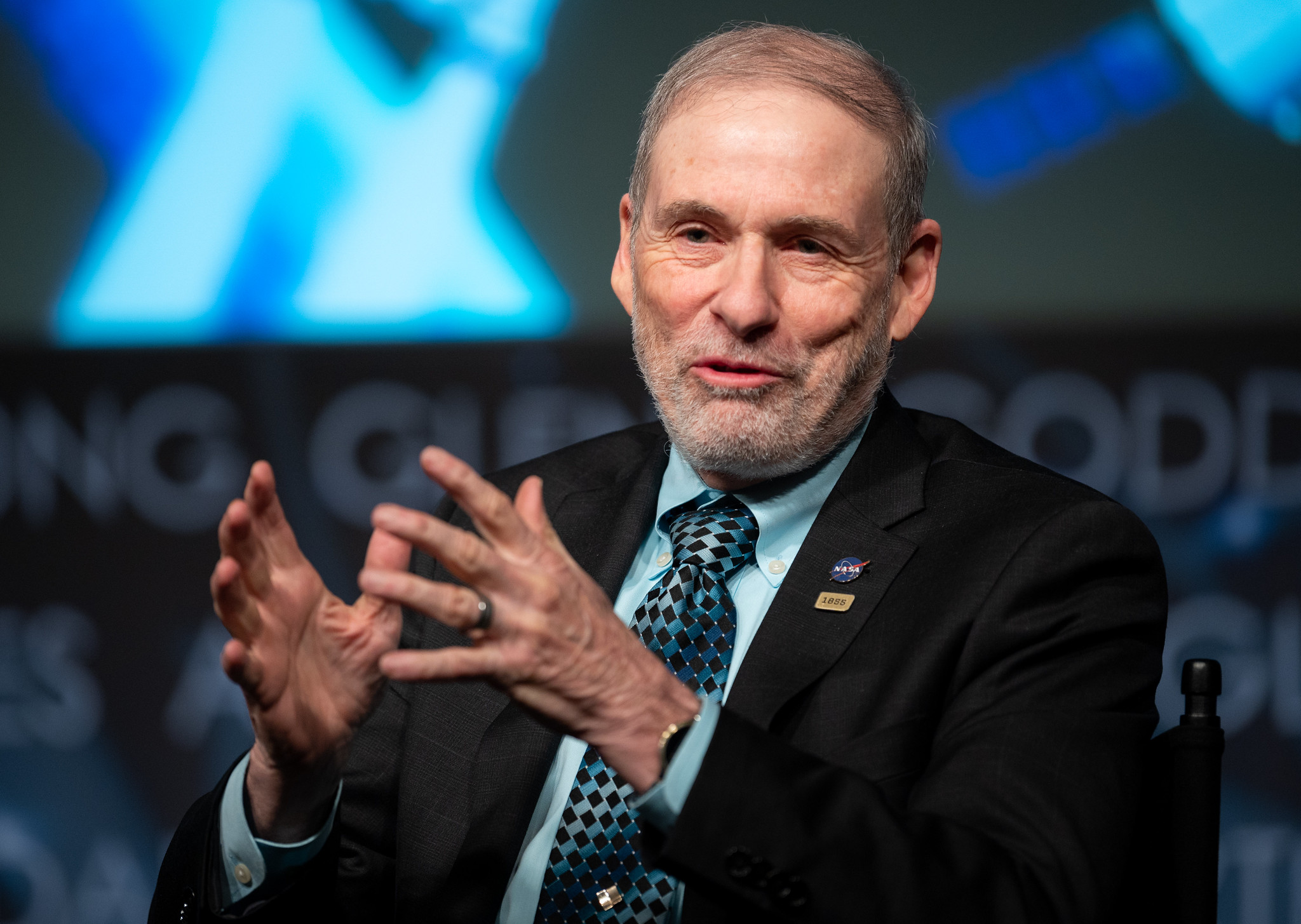
“The intent is to say, ‘Make every day count,’” Loverro said during a televised town hall at NASA Headquarters. “Do something every day that helps us achieve our mission. Every day is important, as every one of us are. If every individual makes something happen every day, that helps us achieve our mission, this is going to be easy.”
Loverro, a retired Air Force colonel, has 45 years of government service. He spent three decades in the Department of Defense and the National Reconnaissance Office developing, managing and establishing national policy for the full range of national security space activities. In his new role, Loverro will oversee the development of human spaceflight systems for the Artemis and Commercial Crew programs.
“I called his references and the one thing I heard over and over again is that you will not find anyone who works harder than Doug Loverro,” NASA Administrator Jim Bridenstine said. “I saw that when I was in the U.S. House of Representatives; he was working relentlessly to accomplish the goals of our national space policy.
“Our budgets are going up. It was time, in my view, to find a leader who had a long history of making programs run on schedule and on budget. I think Doug is that kind of leader.”
Loverro succeeds former astronaut Kenneth Bowersox, who had been acting associate administrator since July.
Bridenstine and Loverro answered questions from NASA employees in attendance, and questions submitted online by employees. Both touched on the issue of future funding for the Artemis program, with the administrator stating that he believes an appropriations bill will be passed by the Congress by Dec. 20. Even if that doesn’t happen, Loverro said NASA should not be deterred.
“We can’t use funding as a crutch on which we say we can’t meet our objectives,” he said. “Our job is to create a vision that allows us to get to the Moon. We’re not going to get every dollar that we ask for every year. We need to have the imagination to figure out how to treat funding just like we treat any other issue that comes up in the program. We’re going to have technical issues, engineering issues and science issues. We can’t let funding be the single determinant of success.”
NASA’s Marshall Space Flight Center Director Jody Singer met with a group of employees in Morris Auditorium prior to watching the town hall broadcast from Headquarters. She noted Marshall’s support of multiple activities under the Human Exploration and Operations Mission Directorate, including the International Space Station and the Commercial Crew Program.
“Doug Loverro getting to know you and getting to see what we do will be mind-boggling to him,” Singer said. “I know he’s looking forward to it.”
Loverro is scheduled to visit Marshall the week of Dec. 16.
Boyette, an ASRC Federal/Analytical Services employee and Marshall Star editor, supports the Office of Strategic Analysis & Communications.
NASA Shares Midsized Robotic Lunar Lander Concept With Industry
As NASA presses forward with its mission to the Moon, Mars and beyond, the development of top-tier technology is critical to success. With emphasis on lunar exploration and scientific investigation, the desire to deliver a wide variety of payloads to the Moon has increased.
That’s not a new concept for NASA’s Commercial Lunar Payload Services initiative, which is leading the effort — and has rolled out a new lunar lander concept designed by engineers at NASA’s Marshall Space Flight Center.
Having already awarded commercial contracts for payload delivery to the lunar surface, NASA seeks to establish additional partnerships to support upcoming lunar ventures. Several will require vehicles capable of exploring the environment — such as a rover — to achieve their scientific objectives.
To prepare for these missions, NASA has conducted a number of studies to identify and examine the technologies — advanced propulsion, navigation, communications, landing and more — needed not just to reach the Moon, but to gather valuable data there.
As part of a recent study, Marshall engineers developed a concept for a midsized lander that could deliver a rover to the Moon’s polar regions. The design seeks to demonstrate a highly accurate, large payload lunar landing vehicle which maximizes mass delivered to the surface while maintaining landing site accuracy.
“This lander was designed with simplicity in mind to deliver a 300-kilogram rover to a lunar pole,” said Logan Kennedy, the project’s lead systems engineer at Marshall. “We used minimal mechanisms and existing technology to reduce complexity, though advancements in precision landing were planned to avoid hazards and to benefit rover operations. We keep the rover alive through transit and landing so it can go do its job.”
Multiple NASA field centers contributed to this complex effort — the results of which are captured in a technical paper. As NASA turns to commercial partners to land science payloads — and eventually humans — on the Moon’s surface, companies can benefit from work NASA has already done.
“As robotic lunar landers grow to accommodate larger payloads, simple but high-performing landers with a contiguous payload volume will be needed,” Kennedy said. “This concept was developed by a diverse team of people over many years and meets that need.
“We hope that other lander designers can benefit from our work,” he added.
As Artemis Day Nears, NASA Spotlights SLS Core Stage Progress
As NASA Administrator Jim Bridenstine and engineers at NASA’s Michoud Assembly Facility and NASA’s Stennis Space Center get ready for Artemis Day activities Dec. 9-10, the agency has rolled out a new infographic showcasing the Space Launch System. NASA’s premiere deep space rocket, SLS is set to loft a variety of science and exploration missions, including sending the first woman and the next man to the Moon by 2024. Social media influencers and members of the news media will tour Michoud on Dec. 9 for an up-close look at the SLS core stage, set to power the first Artemis lunar mission, and will visit Stennis on Dec. 10, where test stand engineers will put the core stage through its paces prior to its delivery to NASA’s Kennedy Space Center for launch. Powered by four RS-25 engines and twin solid rocket boosters, SLS is the only rocket that can send the Orion crew spacecraft, astronauts and supplies to the Moon on a single mission. (NASA/Bailey Collins)
Artemis II Propellant Tanks Prepped for Next Phase of Manufacturing
Both of the Artemis II propellant tanks for NASA’s Space Launch System rocket have moved to the next phase of manufacturing at NASA’s Michoud Assembly Facility. Artemis II is to be the first crewed mission with SLS and NASA’s Orion spacecraft. Teams at Michoud completed welding on each of the giant tanks earlier this fall. The liquid oxygen tank has completed proof testing and is being readied for non-destructive evaluation, while the liquid hydrogen tank is being prepared for proof testing. The tests validate weld strength and ensure structural soundness of the structures. Testing methods of the two propellant tanks differ due to the size and load differences the two pieces of hardware will experience during flight. The liquid oxygen tank and liquid hydrogen tank hold a combined 733,000 gallons of propellant super cooled to minus 423 degrees Fahrenheit to power the four RS-25 engines at the bottom of the rocket. (NASA/Jude Guidry)
Black Hole Nurtures Baby Stars a Million Light-Years Away
Black holes are famous for ripping objects apart, including stars. But now, astronomers have uncovered a black hole that may have sparked the births of stars over a mind-boggling distance, and across multiple galaxies.
If confirmed, this discovery, made with NASA’s Chandra X-ray Observatory and other telescopes, would represent the widest reach ever seen for a black hole acting as a stellar kick-starter. The black hole seems to have enhanced star formation more than one million light-years away. One light year is equal to 6 trillion miles.
“This is the first time we’ve seen a single black hole boost star birth in more than one galaxy at a time,” said Roberto Gilli of the National Institute of Astrophysics in Bologna, Italy, lead author of the study describing the discovery. “It’s amazing to think one galaxy’s black hole can have a say in what happens in other galaxies millions of trillions of miles away.”
A black hole is an extremely dense object from which no light can escape. The black hole’s immense gravity pulls in surrounding gas and dust, but particles from a small amount of that material can also get catapulted away instead at nearly the speed of light. These fast-moving particles form two narrow beams or “jets” near the poles of the black hole.
The supermassive black hole scientists observed in the new study is located in the center of a galaxy about 9.9 billion light-years from Earth. This galaxy has at least seven neighboring galaxies, according to observations with the European Southern Observatory’s Very Large Telescope and the Large Binocular Telescope.
Using the National Science Foundation’s Karl Jansky Very Large Array, scientists had previously detected radio-wave emission from a jet of high-energy particles that is about a million light-years long. The jet can be traced back to the supermassive black hole, which Chandra detected as a powerful source of X-rays produced by hot gas swirling around the black hole. Gilli and colleagues also detected a diffuse cloud of X-ray emission surrounding one end of the radio jet. This X-ray emission is most likely from a gigantic bubble of hot gas heated by the interaction of the energetic particles in the radio jet with surrounding matter.
As the hot bubble expanded and swept through four neighboring galaxies, it could have created a shock wave that compressed cool gas in the galaxies, causing stars to form. All four galaxies are approximately the same distance, about 400,000 light years, from the center of the bubble. The authors estimate that the star formation rate is between about two to five times higher than typical galaxies with similar masses and distance from Earth.
Astronomers have seen many cases where a black hole affects its surroundings through “negative feedback” — curtailing the formation of new stars. This can occur when the black hole’s jets inject so much energy into the hot gas of a galaxy, or galaxy cluster, that the gas can’t cool down enough to make large numbers of stars.
In this newly discovered collection of galaxies, astronomers have found a less common example of “positive feedback,” where the black hole’s effects increase star formation. Moreover, when astronomers previously encountered positive feedback, it either involved increases in the star formation rate of 30% or less, or it occurred over scales of only about 20,000 to 50,000 light years on a nearby companion galaxy. Whether the feedback is positive or negative depends on a delicate balance between the heating rate and cooling rate of a cloud. That is because clouds that are initially cooler when hit by a shock wave are more prone to experience positive feedback, and form more stars.
The researchers used a total of six days of Chandra observing time spread out over five months.
A paper describing these results has been published in the most recent issue of the journal “Astronomy and Astrophysics” and is available online.
NASA’s Marshall Space Flight Center manages Chandra. The Smithsonian Astrophysical Observatory’s Chandra X-ray Center controls science and flight operations from Cambridge and Burlington, Massachusetts.
Marshall Holiday Tree Lighting Celebration Set for Dec. 9
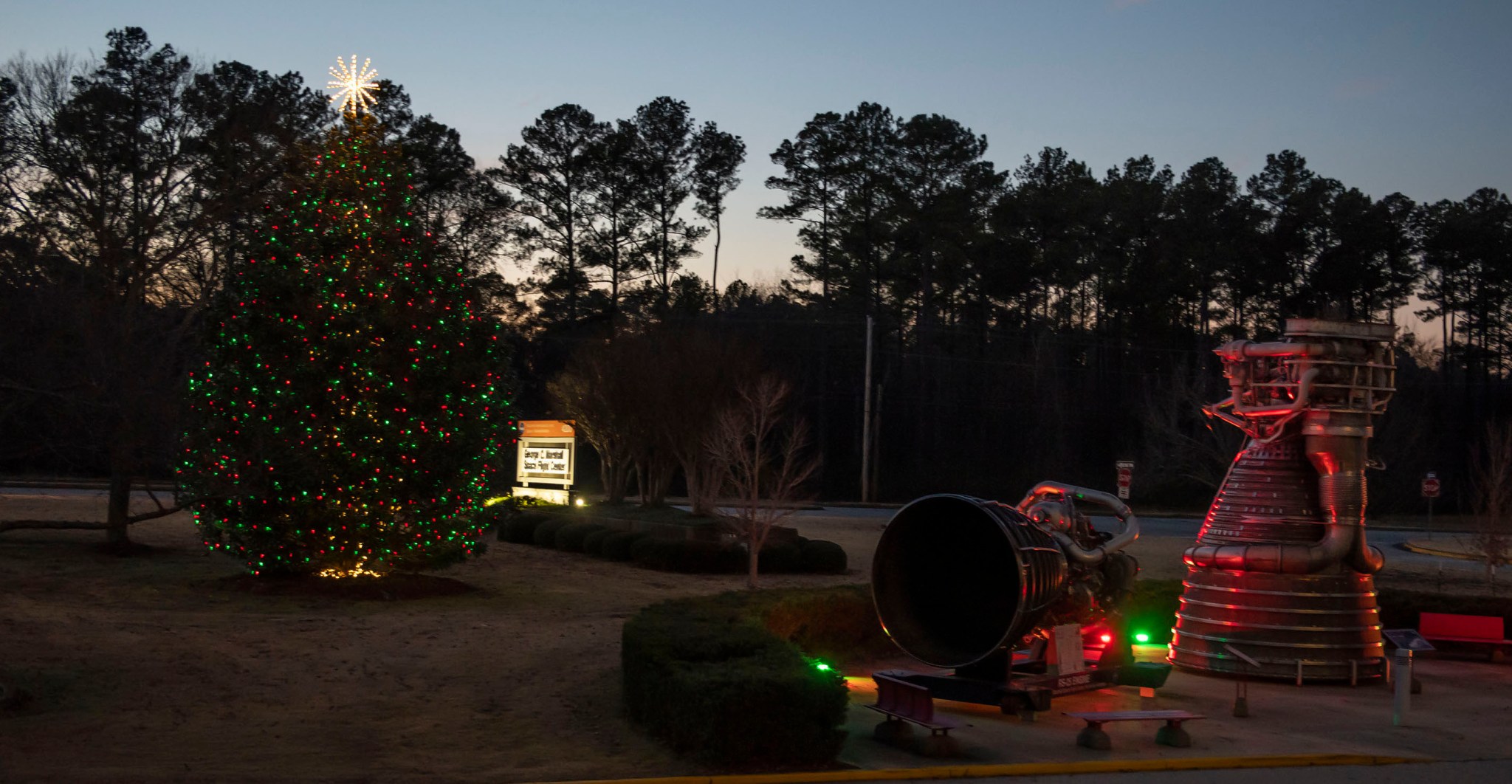
NASA’s Marshall Space Flight Center team members are invited to help usher in the holiday season Dec. 9 as Marshall hosts its annual tree lighting festivities from 4:45-5:30 p.m. on the front terrace of Building 4200.
The tree lighting ceremony will include free hot chocolate and cookies, and children from the Marshall Child Development Center will perform classic holiday tunes.
Officials at Marshall say participants also can expect a visit by a special guest from the North Pole.
NASA’s Fermi, Swift Missions Enable a New Era in Gamma-ray Science
A pair of distant explosions discovered by NASA’s Fermi Gamma-ray Space Telescope and Neil Gehrels Swift Observatory have produced the highest-energy light yet seen from these events, called gamma-ray bursts. The record-setting detections, made by two different ground-based observatories, provide new insights into the mechanisms driving gamma-ray bursts.
Astronomers first recognized the GRB phenomenon 46 years ago. The blasts appear at random locations in the sky about once a day, on average.
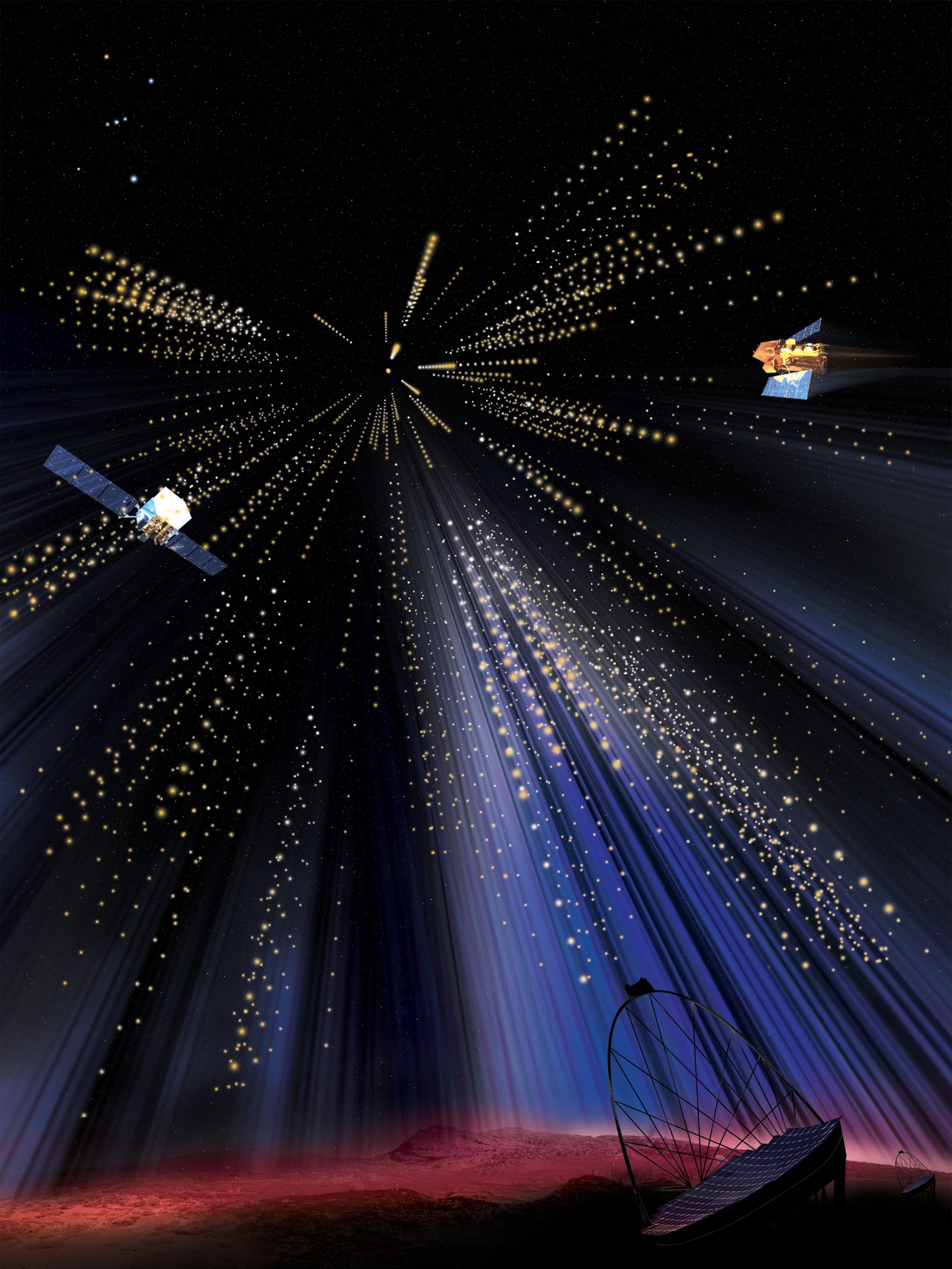
The most common type of GRB occurs when a star much more massive than the Sun runs out of fuel. Its core collapses and forms a black hole, which then blasts jets of particles outward at nearly the speed of light. These jets pierce the star and continue into space. They produce an initial pulse of gamma rays — the most energetic form of light — that typically lasts about a minute.
As the jets race outward, they interact with surrounding gas and emit light across the spectrum, from radio to gamma rays. These so-called afterglows can be detected up to months — and rarely, even years — after the burst at longer wavelengths.
“Much of what we’ve learned about GRBs over the past couple of decades has come from observing their afterglows at lower energies,” said Elizabeth Hays, the Fermi project scientist at NASA’s Goddard Space Flight Center. “Now, thanks to these new ground-based detections, we’re seeing the gamma rays from gamma-ray bursts in a whole new way.”
Fermi’s Gamma-ray Burst Monitor is a collaborative effort between NASA’s Marshall Space Flight Center and the Max Planck Institute for Extraterrestrial Physics in Germany.
Two papers published in the journal Nature describe each of the discoveries. A third paper analyzes one of the bursts using a rich set of multiwavelength data from observatories in space and on the ground. A fourth paper, accepted by The Astrophysical Journal, explores the Fermi and Swift data in greater detail.
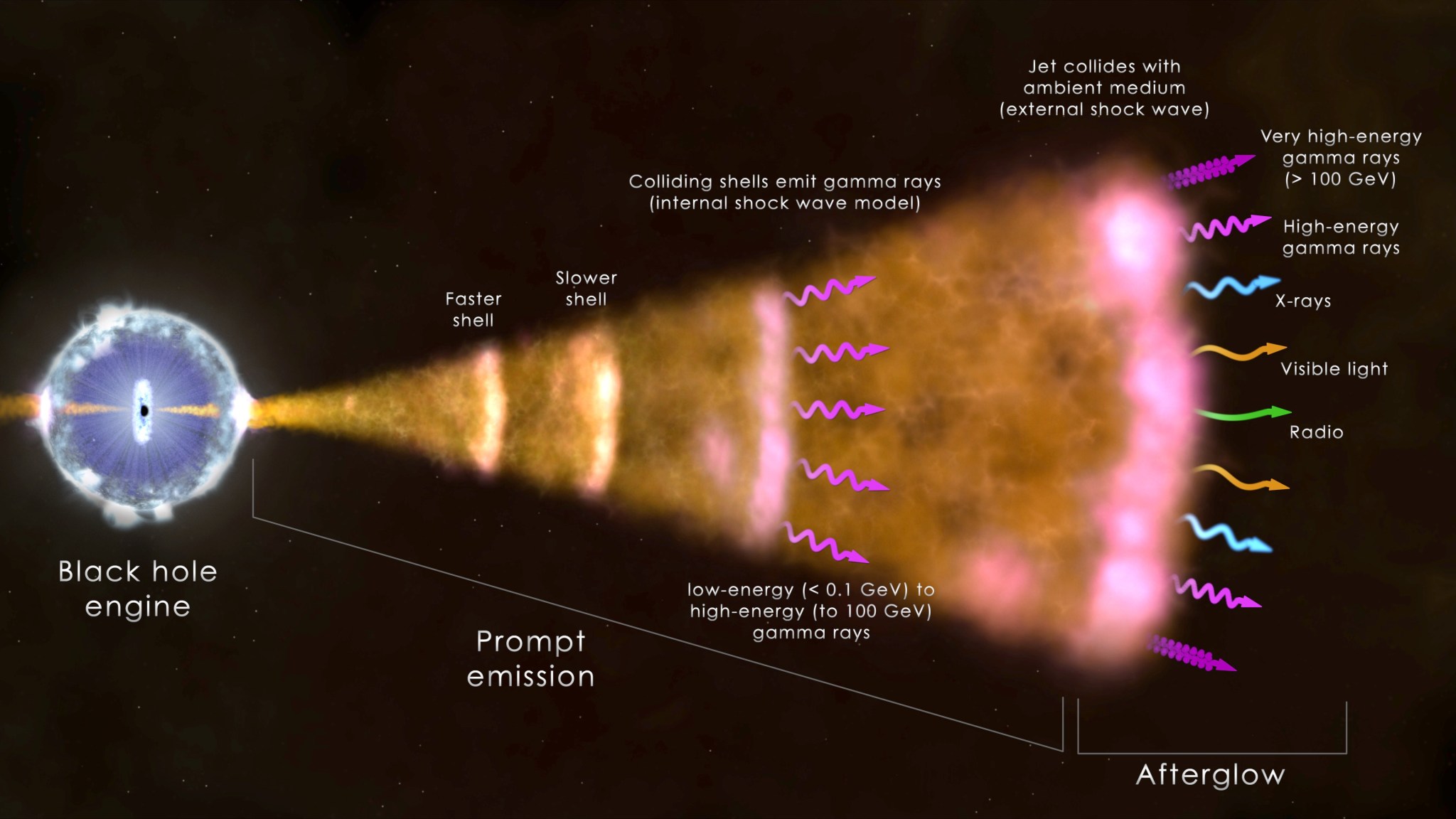
On Jan. 14, 2019, both the Fermi and Swift satellites detected a spike of gamma rays from the constellation Fornax. The missions alerted the astronomical community to the location of the burst, dubbed GRB 190114C.
One facility receiving the alerts was the Major Atmospheric Gamma Imaging Cherenkov observatory, located on La Palma in the Canary Islands, Spain. Both of its 17-meter telescopes automatically turned to the site of the fading burst. They began observing the GRB just 50 seconds after it was discovered and captured the most energetic gamma rays yet seen from these events.
The energy of visible light ranges from about 2 to 3 electron volts. In 2013, Fermi’s Large Area Telescope detected light reaching an energy of 95 billion electron volts, then the highest seen from a burst. This falls just shy of 100 GeV, the threshold for so-called very high-energy gamma rays. With GRB 190114C, MAGIC became the first facility to report unambiguous VHE emission, with energies up to a trillion electron volts, or 1 TeV. That’s 10 times the peak energy Fermi has seen to date.
“Twenty years ago, we designed MAGIC specifically to search for VHE emission from GRBs, so this is a tremendous success for our team,” said co-author Razmik Mirzoyan, a scientist at the Max Planck Institute for Physics and the spokesperson for the MAGIC collaboration. “The discovery of TeV gamma rays from GRB 190114C shows that these explosions are even more powerful than thought before. More importantly, our detection facilitated an extensive follow-up campaign involving more than two dozen observatories, offering important clues to the physical processes at work in GRBs.”
These included NASA’s NuSTAR mission, the European Space Agency’s XMM-Newton X-ray satellite, the NASA/ESA Hubble Space Telescope, in addition to Fermi and Swift, along with many ground-based observatories. Hubble images acquired in February and March captured the burst’s optical afterglow. They show that the blast originated in a spiral galaxy about 4.5 billion light-years away. This means the light from this GRB began traveling to us when the universe was two-thirds of its current age.
This Week in NASA History: Launch of ASTRO-1 – Dec. 2, 1990
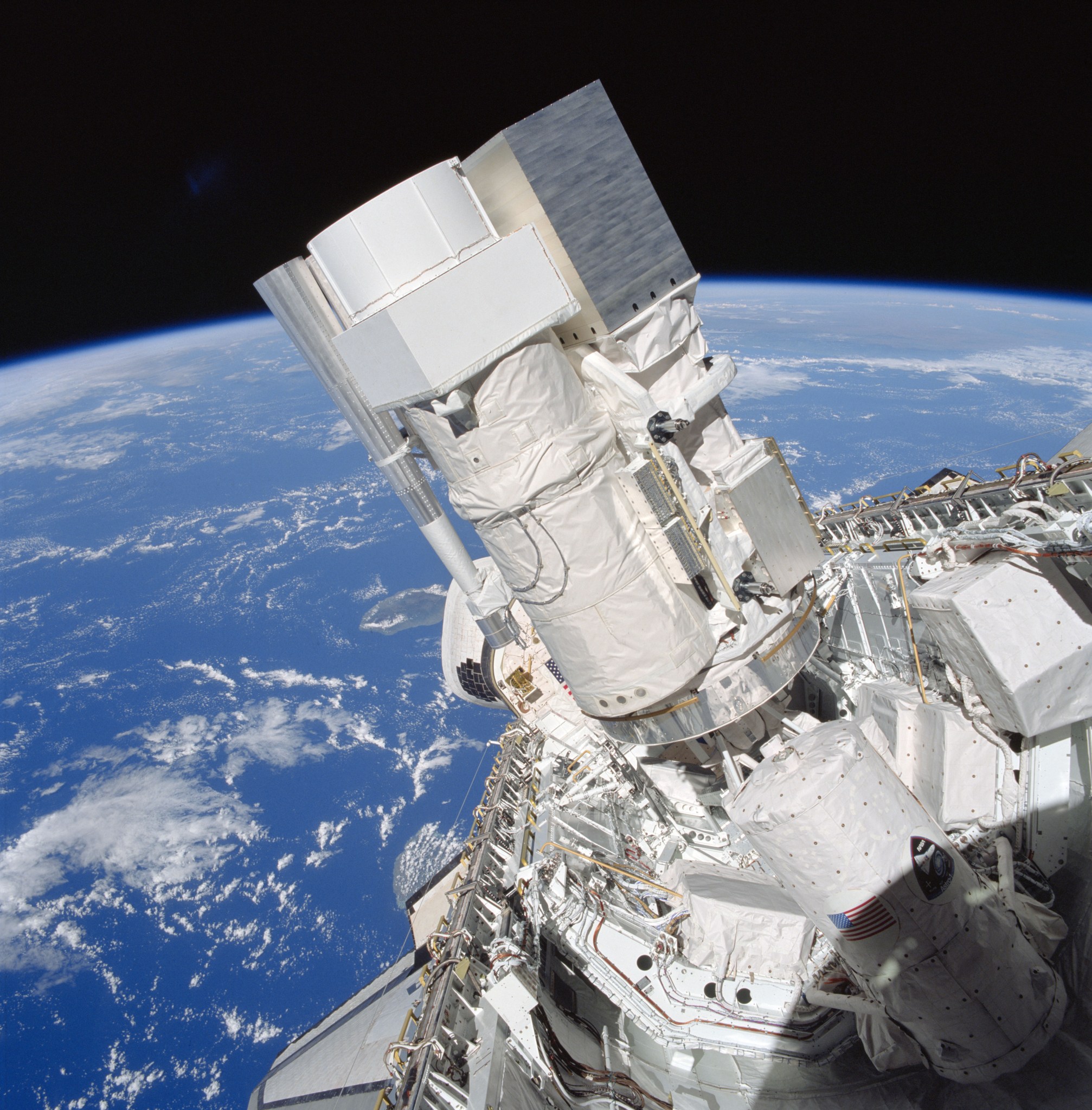
This week in 1990, space shuttle Columbia, mission STS-35, launched from NASA’s Kennedy Space Center carrying Astronomy Laboratory 1 in its cargo bay. ASTRO-1 was developed as a system of telescopes that could fly multiple times on the space shuttle. It consisted of three ultraviolet telescopes and an X-ray telescope. The telescopes were mounted on a Spacelab pallet in the payload bay of the shuttle. NASA’s Marshall Space Flight Center was responsible for managing the Spacelab missions. Here, the various components of the ASTRO-1 payload are seen above the backdrop of Earth. The NASA History Program is responsible for generating, disseminating and preserving NASA’s remarkable history and providing a comprehensive understanding of the institutional, cultural, social, political, economic, technological and scientific aspects of NASA’s activities in aeronautics and space. For more pictures like this one and to connect to NASA’s history, visit the Marshall History Program’s webpage. (NASA)























